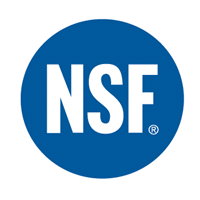Imagine you are the Quality Director of a site manufacturing critical medicinal products or medical devices. You have a sickness absence rate of 50% of QA and QC staff. The government is keen for the site to produce as much product as possible. You need to develop a plan to keep the site in compliance whilst freeing up resources to help with daily QA/QC activities. Activities can be STOPPED, DELAYED or CONTINUED
STOPPING ACTIVITIES
Stopping an activity may seem to be extreme but with a 50% reduction in staff, actions should be taken proactively before the Quality System slips out of control. An activity that could be stopped is change controls that have not been implemented. As an action, all pending change controls should be reviewed and only those mandatory changes (e.g. linked to regulatory commitments) should be implemented. This will have the effect of reducing validation effort, regulatory affairs work, QC testing and documentation updates. Being extremely stringent with limiting change controlscan free up QA and QC resources. Similarly, any improvement plans such as introducing a new IT system should be halted, again freeing up resources.
DELAYING ACTIVITIES
Delaying compliance activities feels wrong, but in extremes, this can be done using the quality system. Any temporary changes should be made using the quality system.
| Quality System | Potential Changes | Controls |
| Documentation updates, e.g. SOPs, test methods |
Extend the review period by three months |
> Change control > Anything linked to a mandatory change, e.g. pharmacopeial update to be updated in the appropriate timelines |
| Self-inspection (SI) program |
Re-plan and move some SIs | > Perform a risk assessment on existing plan, re-schedule lower risk SIs |
| Annual product reviews (APRs) |
Allow an extra month to complete the APR Potentially outsource the activity |
> Change control |
| Product complaints | Immediately triage all complaints Extend the timeline for minor complaints |
> Change control > Extend timeline for completion of minor complaints by 15 days |
| Regulatory commitments |
Wherever possible these should not be delayed |
> If any regulatory commitments may/will not be met, then the regulatory authority must be informed promptly |
CONTINUING ACTIVITIES
Activities that should be continued in accordance with existing SOPs are those linked to batch release and testing activities. It is important to ensure that there are sufficient QA/QC staff to support production activity and, if necessary, to reduce planned output. If action has been taken to stop some activities at the site and delay others, then perhaps some staff can be re-deployed to bolster frontline staff Deviations and out-of-specification/trend activities should be performed in a timely manner to ensure product flow and also to identify any problems as early as possible.
In summary, taking a hard look at all activities that consume resources and applying a risk assessment approach can help to free up some resources to bolster direct product fulfilment activities and thereby keep critical medicinal products flowing to patients.
Download pdf here
About The Author
Lynne Byers | VP, NSF International Pharmaceutical Services, EMEA
Ms. Byers has gained more than 35 years’ of extensive pharmaceutical manufacturing management and QA experience working for three major international pharmaceutical manufacturers, culminating in the role of Global Head (VP) of External Supply Operations QA for Novartis in Switzerland. In addition, she worked as Head of Inspectorate and Licensing for the MHRA from 2004-2006. She joined NSF in 2017.

About NSF
NSF International provides a comprehensive range of support services for the pharmaceutical industry covering consulting and regulatory guidance, training and auditing on a global basis.
We combine experienced industry professionals with former regulatory agency staff (FDA, MHRA, etc) to deliver a unique team that will help you achieve and maintain compliant, future-proof pharmaceutical quality systems.

